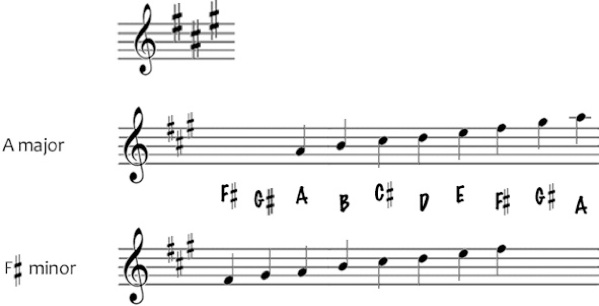Basics



Key Signatures become much more clear as an idea when getting further into the study of harmony and music theory.
Understanding the major scale is the most important part of understanding music theory.

An accidental alters a note by a half step.

Here’s an example with some sharps.
sharp
flat
natural
Raises the note by a half step
Lowers the note by a half step
Cancels a sharp or a flat
Accidentals only last up to the end of whatever measure they were written in.
If we apply a key signature to this example, we see that we no longer need to write anymore sharps throughout the line.
Key Signatures allow musicians to write in multiple tonal centers (keys) without having to use as many accidentals.
We have an F#, C#, and a G# in this key signature, which happens to be the key of A major

This key signature represents two keys;
one major key (A major) and one minor key (F# minor).
Both scales use the same notes, but start at different places.
So they also end up using the same key signature. These are known as relative major and minor scales/keys.

All key signatures written in treble clef.
All key signatures written in bass clef.
(just in case theres any confusion.)
*Note how no matter what clef you use, the shape of the accidentals in the key signature stays the same!
To the left we have the circle of fifths.
To fully understand the concept behind the circle of fifths, is to understand a large chunk of the relationships between the 12 pitches.
We’ll see this concept more in later lessons.

















